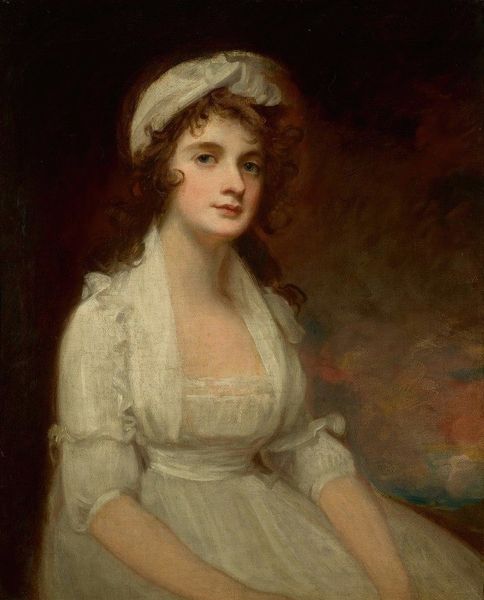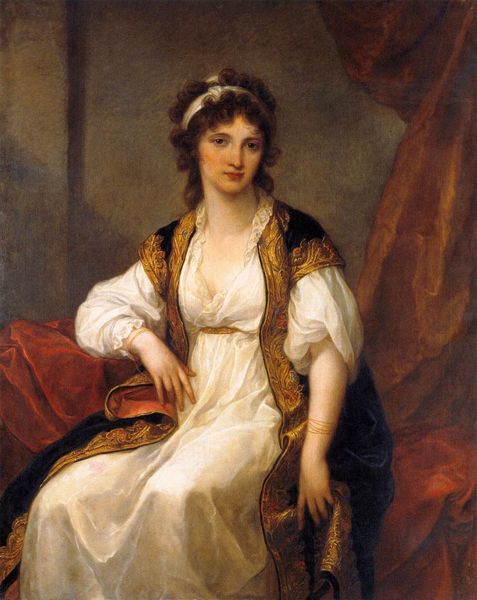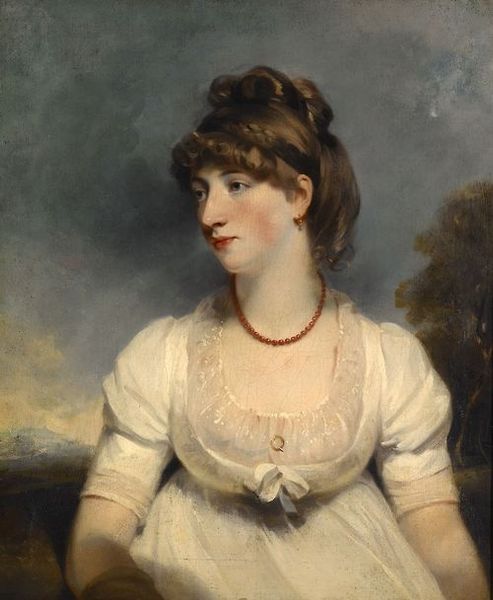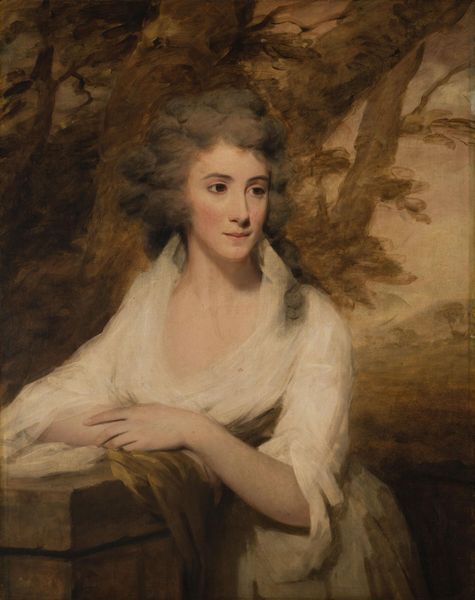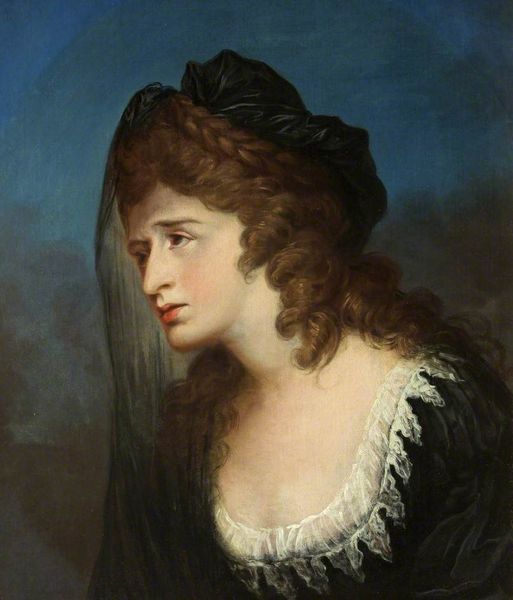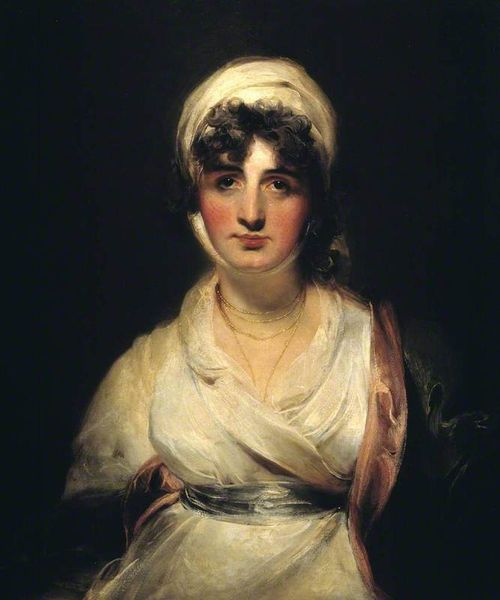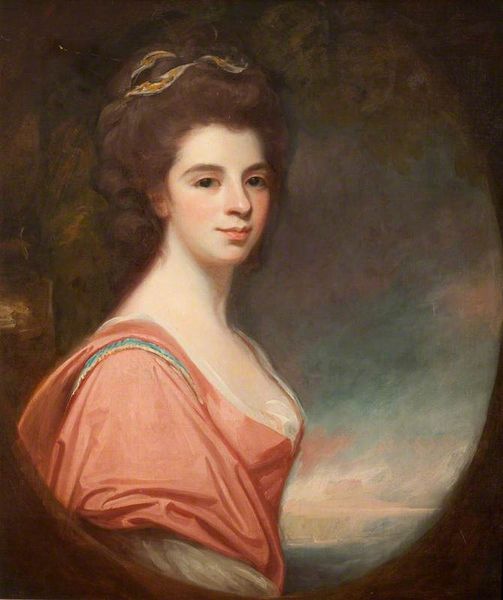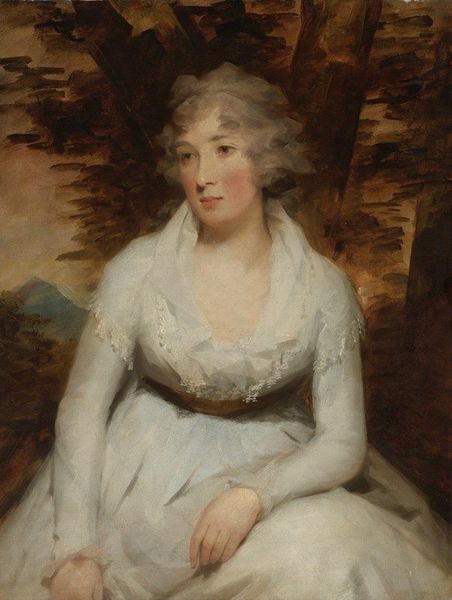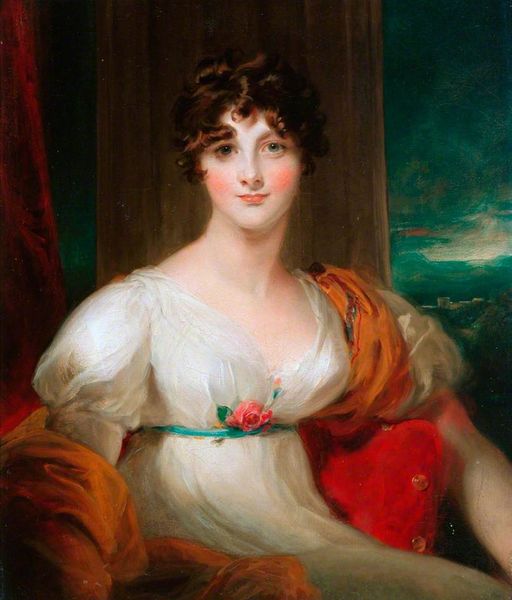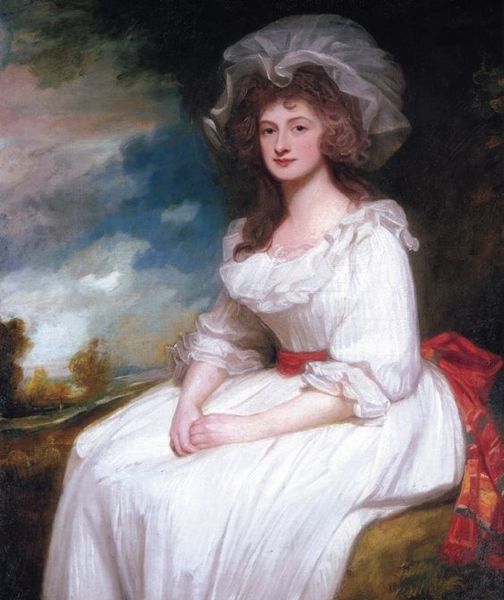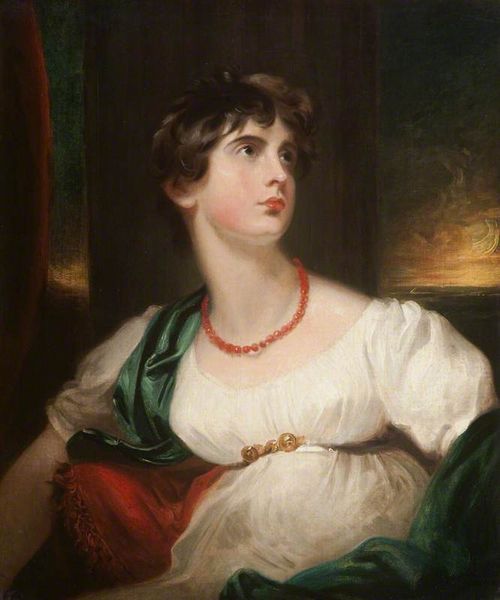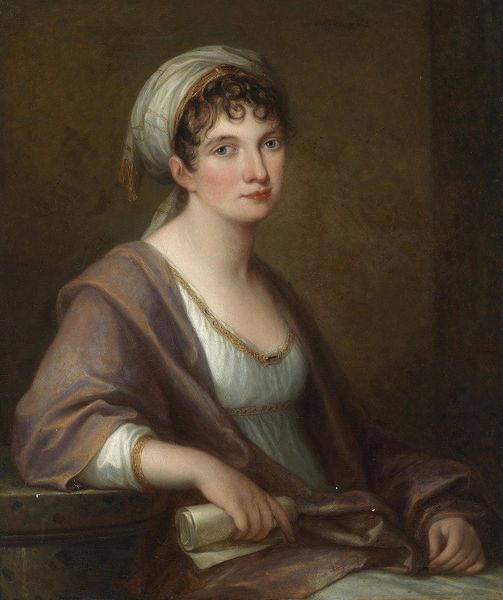
painting, oil-paint
#
portrait
#
narrative-art
#
painting
#
oil-paint
#
romanticism
#
academic-art
Copyright: Public domain
Curator: Here we have Thomas Lawrence’s portrait of Lady Anna Powell, painted in 1794 using oil on canvas. Editor: The overwhelming sense I get is one of delicate melancholy. There's a softness to her expression, a vulnerability highlighted by the almost Grecian style of her simple white dress and head covering. Curator: That’s interesting. Focusing on those garments, they speak volumes about the era’s shifting tastes. The move toward simpler, more classical forms in women's fashion reflected broader social changes. Gone are the heavily structured gowns, replaced by lighter fabrics and looser silhouettes, indicative of a newfound emphasis on naturalism and freedom. Also look closely at the material reality of the head wrap—how Lawrence suggests texture and volume with layers of impasto paint. Editor: Yes, and this is why I'm curious about that choice. White, of course, symbolizes purity, but the head covering is quite suggestive of classical vestals and maybe, combined with her quiet countenance, hints at resignation or even illness. Perhaps the family hoped to portray her in a particularly virtuous light, laden with associations. Curator: Possibly. Consider the context, too. Lawrence, despite his young age, was rapidly becoming the portrait painter of choice for the elite. He likely would have been sensitive to the socio-political climate, understanding the importance of conveying the sitter's status through subtle markers of wealth, not just in finery but also in the careful execution of brushwork and the quality of the materials used. What kind of canvas would he select and prime to do this delicate subject justice? Who supplied it? These concerns resonate strongly with how portraits were considered "speaking likenesses" during that period. Editor: The setting too adds to this impression. While subtle, the landscape in the left background infuses this portrait with additional meanings. Could this also imply liberty or an escape into the wild? Curator: A worthy observation! Perhaps Lady Anna, gazing to the side as she is, may simply want to wander off from the burdens placed on her station and gender. Editor: All told, a fascinating intersection of material culture and visual symbolism. Curator: Indeed. Examining both the 'how' and the 'why' Lawrence chose to depict Lady Anna unveils so much about both sitter and the artist's position in late 18th-century Britain.
Comments
No comments
Be the first to comment and join the conversation on the ultimate creative platform.
